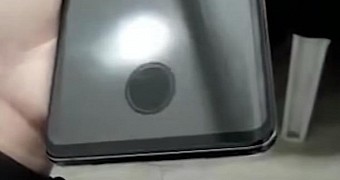A newly-leaked hands-on video with the Samsung Galaxy S10+ is making the round today, and while most people check out the phone itself, others actually pay attention to a different detail.
The phone in question comes with a screen protector, which itself seems to highlight one potential problem that you might experience when using such an accessory on the device.
First and foremost, some basic info. The Galaxy S10 and S10+ will use a fingerprint sensor embedded into the screen, which means that you just have to touch the display to unlock the device. This is an approach that’s already being used by other companies, like Huawei, and which makes its debut on the Samsung product lineup on the S10 series.
Because the fingerprint sensor is placed under the glass, many believed that screen protectors could actually block it, making it impossible to unlock the device using this method. And the video you see here seems to suggest this is the case, as the screen protector uses a super-ugly cutout in the place where the fingerprint reader is expected to be.
This means that the screen protector shouldn’t cover that area because otherwise, the fingerprint sensor may not be able to read your fingerprint and unlock the device.
Unlikely to be a problem
However, this is very unlikely to be the case. First and foremost, it’s because several of the phones that feature a fingerprint sensor embedded into the screen already work with screen protectors, and there’s a good chance that Samsung has already tried to make sure this is the case with the S10 as well.
Then, Max J., also known on Twitter as @Samsung_News_ and having a good track on mobile scoops, says some companies have already produced screen protectors without the hole in the screen.
Most likely, a screen protector that doesn’t have the hole cutout could be more expensive and only be available from premium manufacturers, though it remains to be seen to what degree a full protector would block the fingerprint reader.

 14 DAY TRIAL //
14 DAY TRIAL // 